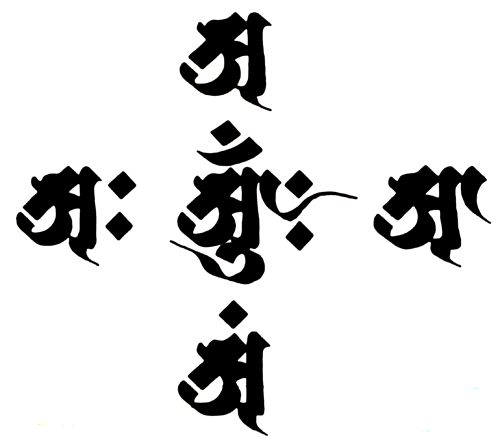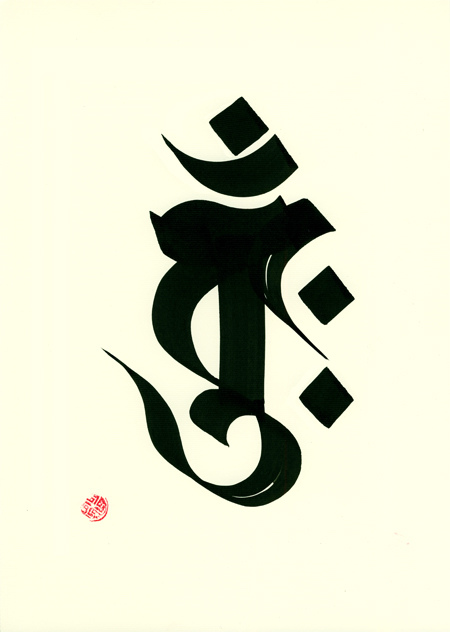venkat veeraraghavan
Madhav Deshpande

--
You received this message because you are subscribed to the Google Groups "भारतीयविद्वत्परिषत्" group.
To unsubscribe from this group and stop receiving emails from it, send an email to bvparishat+...@googlegroups.com.
To post to this group, send email to bvpar...@googlegroups.com.
For more options, visit https://groups.google.com/d/optout.
Madhav Deshpande

S. L. Abhyankar

--
BVK Sastry
Namaste
Precisely ! < Prof. Deshpande : My point is simply that sounds, syllables and words that do not occur in normal Sanskrit usage can be found in technical language of Pāṇini and in Tantric syllables etc.> I agree with you.
'Post colonial academic Sanskrit studies has failed to explore the following (Traditional, practical, even surviving) aspects of Samskruth studies in the Samskruth language applications in religion-rituals ! The most important of this is the ' uccharana': pronunciation fundamentals of the language. Otherwise called as ' shikshaa' base and basics' of Vyakarana'. Not to mention of the greater network of ' Varna-Shaastra (Shikshaa)- Flow (Chandas)- Word Processing (vyakarana)- Semantics and Meaning unfolding (Nirukta) - Applications by context ( Jyotisha and Kalpa); Rules of Logical evaluation and validation through Vakya and Pramana shastras. In short the ' Shadanga- Vednaga Paddhati of Samskruth studies'.
The triple whammy in having deviated from traditional norm, accepting and living with a shortened ' Sanskrit Studies Model' come from the following aspects: (Note: wham·my : (noun, informal)-an event with a powerful and unpleasant effect; a blow;an evil or unlucky influence.). I do acknowledge the good that the colonial studies have brought in creating the awareness of Sanskrit works, the manuscripts preserved and the like, which normally would not have been done in Indian context. Due credit and appreciation must be given to western scholars and scholars of orient.
(i) Adaption of 'Romanization (IPA notations ) oriented Script and alien phonetics loaded on Brahmi Varnamaalaa has shifted the core model of Paninian Samskruth studies to be on par with English education. This is the root of several challenges: Both in classical studies of current period and computational Sanskrit linguistics ( which works to program Devanagari Speech and Sentence analysis using English likeness and roman alphabet character set and english grammar logic'. Dr.Narayan Joshi, Achyut Karve have made several observations on this point in 'Shivasutra' related discussions, Varna-Vada and the like).
(ii) The distinction that existed between 'Samskrutham (vedic and laukika) - Prakrutham- Desi- Apabhramsha- Mleccha' model of Indian Linguistics died out.
(iii) The new models of Sanskrit-english Dictionaries and ' Translations colored with ' theology- history' motives created enough resentment and negative opinion in Bharath , for the people of Bharath on their native heritage ! ( the goal that was expected from Macaulay education model). The worst hit in this game is 'Sanskrit Language studies'.
This scenario appears like studying English literature which uses 26 alphabets for word construction with a reduced arbitrary symbols and set of 10 alphabets, using the logic-like of ' alphabets numbers can be progressively increased as the learning progresses' and demand simplification of language studies with a 'reduced alphabets set'. ! Does it ? Contra such study introduces unwarranted distortions and distractions in what the original text-tradition-practice really meant for ! The ' VINIYOGA' ( = Utility- Application -Benefit part of Samskruth studies , repeatedly stressed in many posts by Dr. Yadu, on this forum) has suffered irreversibly.
There is no point in playing a blame-shifting game.
Who is ready to be willing partners and supporters , in this venture ? Can we team and work together to focus our energies on regaining the understanding of < sounds, syllables and words that do occur in normal Sanskrit usage and derivatives of technical language of Pāṇini > < and used in Tantric syllables etc > ??
Regards
BVK Sastry
Radhakrishna Warrier
Is this discussion about the vowel ऌ and its longer (dīrgha) counterpart ॡ or about the consonant + vowel combination लृ and its dīrgha counterpart लॄ ? The first two are counted among vowels and also there is no /r/ sound in their pronunciation. The last two are consonant + vowel combinations (ल् + ऋ and ल् + ॠ ) with an /r/ sound in their pronunciation.
The short ऌ is present in the word कॢप्त that conveys a sense of limitedness. The tatsama word is used in Malayalam to mean something limited. I don’t know any word in Sanskrit with the long vowel ॡ. Also, I don’t know any Sanskrit word with either लृ or लॄ.
Regards,
Radhakrishna Warrier
Sent: Sunday, April 7, 2019 4:30 PM
To: Bharatiya Vidvat parishad
Subject: Re: {भारतीयविद्वत्परिषत्} About the long vowel (ॡ) and its use in the Mantra Mahodadhi
Siddharth Wakankar
shankara
मूर्खः शिश्नो गुदः कक्षा केशः पापरतो नरः॥
https://archive.org/details/EkaAksaraNamKosaSangrahaEd.RamanikaVijayaUniversityOfRajasthan/page/n62
shankara
Subrahmanyam Korada
Professor of Sanskrit, CALTS,
University of Hyderabad,
Ph:09866110741(M),91-40-23010741(R),040-23133660(O)
venkat veeraraghavan
You received this message because you are subscribed to a topic in the Google Groups "भारतीयविद्वत्परिषत्" group.
To unsubscribe from this topic, visit https://groups.google.com/d/topic/bvparishat/hUU4xB_B9JY/unsubscribe.
To unsubscribe from this group and all its topics, send an email to bvparishat+...@googlegroups.com.
Madhav Deshpande
Madhav Deshpande
venkat veeraraghavan
Venkatakrishna Sastry
(G-Mail)
venkat veeraraghavan
BVK Sastry
Namaste
As I know, current known gurukuls give a focus on ' listen -repeat- memorize- repeat' ( shravana- punar uccharana- dharana- paaraayana) line of Shikshaa linked samskruth phonetics.
This is useful, nay critical for the ' Vaidika Prayoga vidhi'- A profession and practice ;
What we are looking at is ' learning shikshaa as foundation of Veda- bhashaa / Deva bhashaa' and leaading to Vedanga Vyakarana- Nirukti / Bhashaa shaastra Paanditya and 'Veda- Rakshaa'.
This is Vedic Academics needed for 'Vaidka Jijnyaasaa - Samshodhanaa - Shaastra jnana'. An exercise of Scholarship - Shaastrajna - building::
The society expects the 'shaastrajna' work from a 'purohita-profesional'- a training which is not imparted to him/her as a part of pedagogy.
Is it a wrong question for a wrong professional ? Or failure to groom the community to be sensitive to the specific areas of 'Shaastra- Bhashaa' ? This is where traditional and oriental / western/ colonial views differ.
What plans are there for connecting these issues in today's society.
Regards
BVK Sastry
Error! Filename not specified.
--
